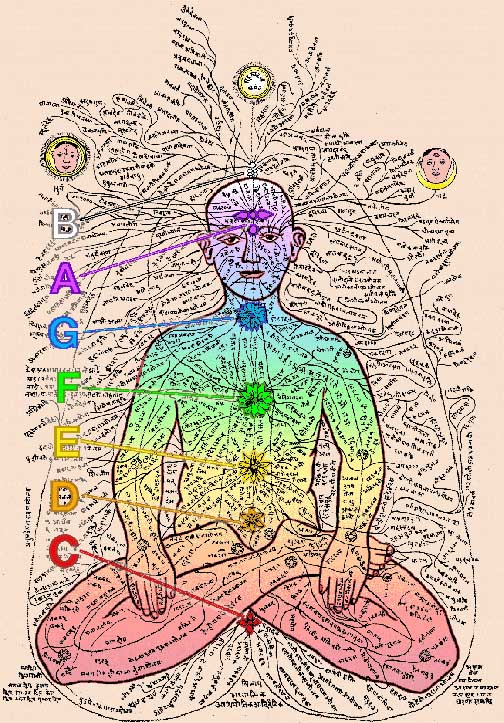
Although the yoga we know today is practiced mainly for its health benefits, it is rooted in Hindu religious principles some 5,000 years old. Derived from the Sanskrit word for "union," the term yoga refers to far more than exercise. In fact, it encompasses a variety of disciplines designed to ultimately bring its practitioners closer to God. Dynana yoga, for instance, seeks union through meditation, while jnana yoga entails the study of scriptures and karma yoga calls for selfless service to God and mankind.
The exercises we now call simply "yoga" are actually hatha yoga, a discipline intended to prepare the body for the pursuit of union with the divine while raising the practitioner's awareness of creation to a higher, keener state. Through controlled breathing, prescribed postures (called asanas), and meditation, hatha yoga seeks to enhance the prana, or life force, that resides in the body and achieve a state of balance and harmony between body and mind. Each of these three disciplines contributes to the search for union in its own unique way:
Breathing. The life force prana is believed to enter the body through the breath, and much of hatha yoga is concerned with helping you control your breathing properly. Shallow, hurried breathing is believed to inhibit the life force, and affect mind and body adversely. Deep, slow breathing is encouraged.
Postures. Some yoga postures
are intended to stretch and strengthen muscles, others to improve posture and work the skeletal system, while others aim to compress and relax the organs and nerves. The underlying purpose is to perfect the body, making it a worthy host for the soul.
Meditation.
Meditation supplements and reinforces the disciplines of hatha yoga, focusing the mind and relaxing the body. Closely linked with focused breathing, it aims to produce a quiet, calm frame of mind. Many people find that it reduces stress and increases energy. The interplay of this and the other two facets of hatha yoga, and the quiet, considered repetition of each, is considered key to achieving yoga's benefits.
Despite its use of physical exercises, yoga is perhaps most closely related to the mind-body family of therapies, which includes meditation and biofeedback. Research shows that, like other mind-body practices, yoga produces measurable physiological changes in the body, including a decrease in the respiratory rate and blood pressure, and an alteration in brain-wave activity reflecting increased relaxation. Yoga has been shown to reduce stress and anxiety, both immediately and over time, and is often recommended to relieve the pain and anxiety of chronic illness. When practiced regularly, it promotes relaxation and enhances the sense of well-being. It also improves physical fitness and circulation, and some advocates say it improves memory. When combined with a low-fat diet and moderate aerobic exercise, it has been found to reverse the build-up of plaque in the coronary arteries--and the more it's practiced, the greater the improvement.
Although yoga's effects are unquestionable, scientists still don't know exactly how it produces them. Some speculate that, like other mind-body therapies, it works largely by relieving stress. Others suggest that it promotes the release of endorphins, the brain's natural pain killers. The Office of Alternative Medicine at the National Institutes of Health has several studies underway to clarify the matter. In the meantime, yoga continues to be practiced by some six million people in the United States.